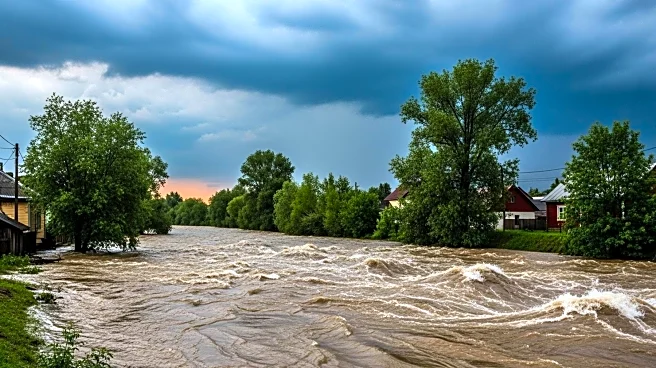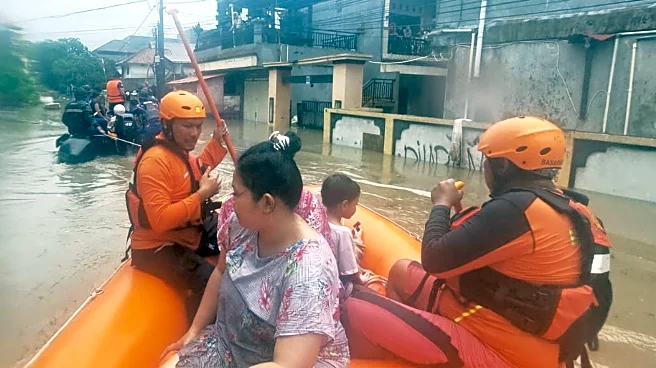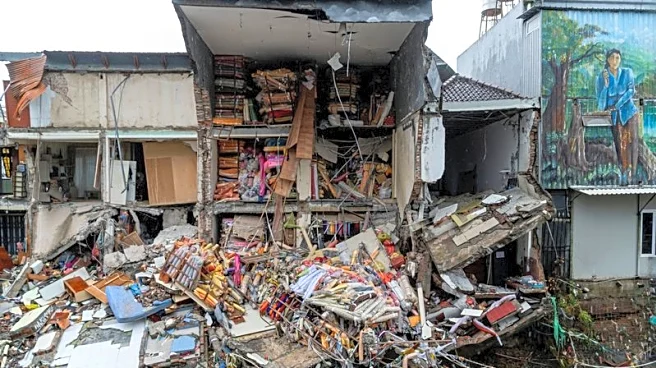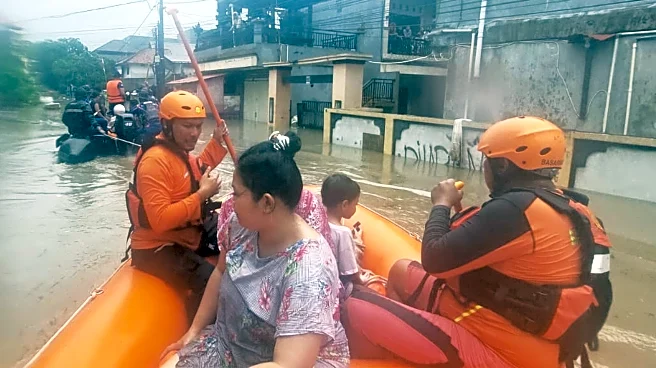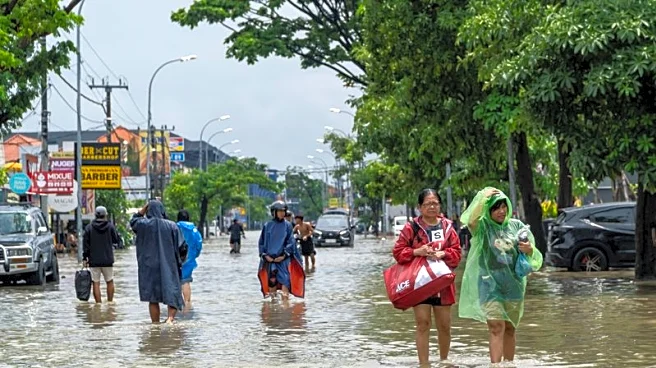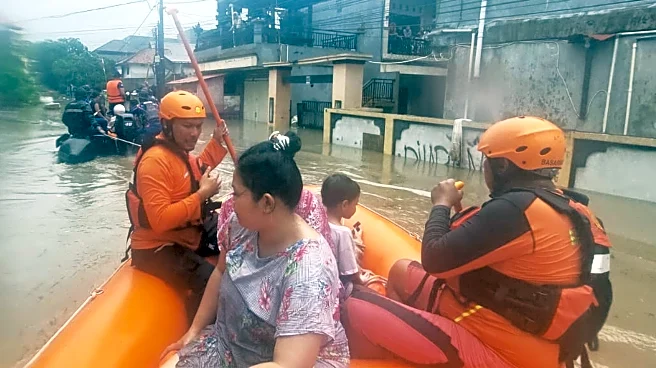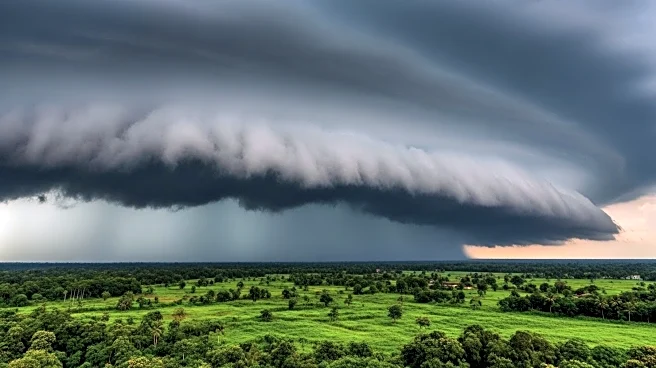What's Happening?
Bali is experiencing its worst flooding in a decade, with torrential rains causing severe damage and resulting in the deaths of at least 14 people. The floods have led to rivers bursting their banks, landslides, and significant infrastructure damage, including the collapse of buildings and roads. The provincial government has declared a week-long state of emergency as rescue teams continue to search for survivors. The flooding has also affected popular tourist areas, disrupting businesses and highlighting ongoing issues with waste management and drainage systems.
Why It's Important?
The flooding in Bali underscores the island's vulnerability to extreme weather events, which are exacerbated by climate change. The disaster has significant implications for the local economy, particularly the tourism sector, which is a major source of income for the region. The situation highlights the urgent need for improved infrastructure and waste management systems to prevent future flooding. Additionally, the response to the disaster will test the effectiveness of local and national emergency management strategies.
What's Next?
With the state of emergency in place, authorities are focusing on providing aid and support to affected communities. Efforts are underway to restore essential services and clear debris from affected areas. The government may face pressure to implement long-term solutions to address the underlying issues that contributed to the severity of the flooding. This could include investments in infrastructure improvements and enhanced disaster preparedness measures.


